| View previous topic :: View next topic |
| Author |
Message |
Cesar M. Salvan
Site Admin
Joined: 09 Jun 2008
Posts: 127
Location: Alcalá de Henares



|
 Posted: Mar 03, 2013 20:41 Post subject: A Scientific and mineralogical trip to the Iberian Pyrite Belt - (6) Posted: Mar 03, 2013 20:41 Post subject: A Scientific and mineralogical trip to the Iberian Pyrite Belt - (6) |
|
|
I want to share with the followers of the forum a brief overview on a topic I consider interesting that constituted a scientific interest for me during several years. Now, because the science cuts we suffered in Spain, that forced me to left my laboratory in stand-by (in an optimistic view…), I have enough time to let you know a little about our work.
Probably, all of you known the Iberian Pyrite Belt (IPB). Located in the SW of the Iberian Peninsula, constitutes one of the largest sulfur anomalies in Earth crust, in the form of at least 80 volcano-sedimentary massive sulfide deposits spread out in Portugal and Spain and that were mined since pre-roman times.
Roughly, we can divide the deposits in two groups:
- Northern IPB: Interpreted as replacive deposits hosted by the apical part of felsic domes, related with dacites and ryolites of early Visean age (Carboniferous). I think that the major and most interesting deposits are Aguasteñidas, La Zarza, Aljustrel and the beautiful San Miguel mines.
- Southern IPB: Includes the deposits of Neves-Corvo, Tharsis, Aznalcollar-Los Frailes, Las Cruces, Lousal, Valverde and Sotiel-Migollas mines. The massive sulfide is hosted by shale and of younger formation than the northern IPB sulfide (Fammenian age, Upper Devonian). The shale-hosted sulfide formation was interpreted as exhalative and formed in an anoxic basin.
Our interpretation is, in brief, the formation of seafloor hydrothermal vents and anoxic bottoms, in response to the crustal alteration and the onset of magmatism in the area, that generated hydrothermal cells that attacked the underlying shales and sandstones of the PQ group. The vented fluids were metal rich and poor in sulfur, so, where the sulfide come from?.
Interestingly, the formation of shale-hosted sulfide deposits in the southern-IPB coincides with the boundary between Devonian and Carboniferous, i.e. the DC boundary, marked by one of the major massive biological extinctions in the Earth history, characterized by the vanishing of about the 90% of terrestrial and the 21% of marine genera.
Coincidence or relation?. We think that the origin of sulfur and the paleogeographic changes and biological crisis of the DC boundary could be related. The sulfur isotopes on the pyrite and other geochemical proxies of anoxia and biological origin of the sulfur moved us to explore the IPB from a different point of view.
Tharsis mines
The Tharsis mines includes sixteen massive sulfide lenses aligned in three groups:
- Filon Norte, San Guillermo and Sierra Bullones pyrite masses, mined in the Filon Norte and Sierra Bullones open pits. About 40 Mt of pyritic ore have been mined here, that constitutes aprox the 45% of the estimated reserves.
- Filon Centro and Los Silillos
- Fion Sur and Esperanza mine
The Tharsis mines were worked by Romans and about 3,5 Mt of roman slags remains in the zone. In 1853, Ernesto Deligny rediscovered the mines and in 1867 were sold to the British company Tharsis Sulphur and Copper Company Ltd. The last active mine was Filon Norte, closed in December 2000 and the pyrite ore were used mainly for the sulfuric acid production.
Biological crisis and sulfide formation
One interesting feature of the Tharsis zone is that we can find a complete continuous sequence of shale, including the massive sulfide in the DC boundary. This allow us to study the vertical distribution of paleobiological proxies before, during and after the DC boundary. To test our hypothesis that the biological extinction drove the massive sulfide formation, we followed a falsation strategy: if there is no relation, we should not find evidences of the biological crisis associated with the mineralization. So, we focused the searching in the “molecular fossils”: molecules that contain information of the biological source. This was possible due to the relatively high content in organic matter of the dark shale that hosts the massive sulfide.
And what we found was awesome: exactly coincident with the anoxia and the formation of pyrite, we found a strong increase of the molecular fossils of vascular plants and terrigenous ecosystems. So, our interpretation was that the extinction of terrestrial ecosystems provides a lot of organic materials to the marine basin, which were used by anaerobic, sulfate reducing bacteria. The bacterial sulfide production lead to the precipitation of fine grained pyrite with the metal provided by hydrothermal vents.
Filon Norte, also, contains other interesting biological-mineralogical connections that are under study (currently stopped due to the terrific scientific policy of Spanish administration).
The genesis of the shale hosted massive sulfide, finally, appears to be connected directly to a biological event. This converts the Tharsis deposit in a unique formation.
| Description: |
Filón Norte, Tharsis, Alosno, Huelva, Spain
Old facilities at Filon Norte open pit |
|
| Viewed: |
69198 Time(s) |
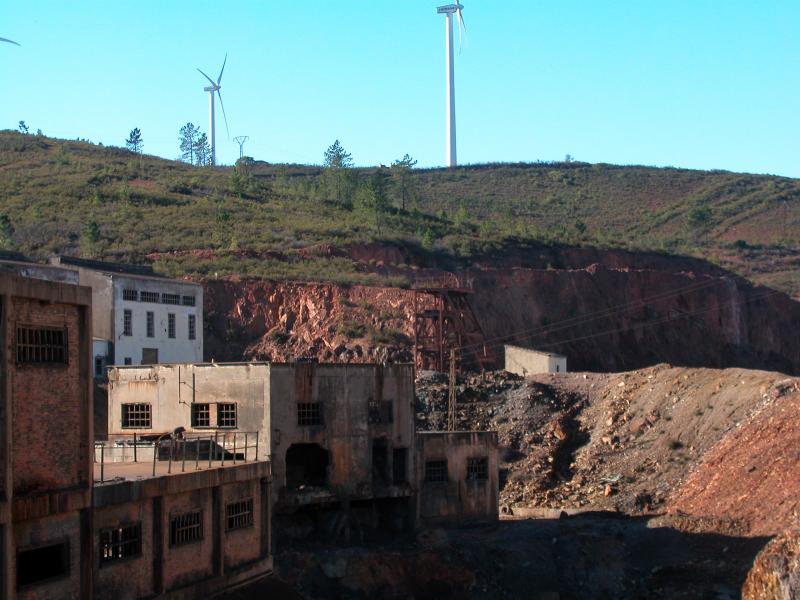
|
| Description: |
Filón Norte, Tharsis, Alosno, Huelva, Spain
Filon Norte open pit. At left, the PQ group. At center, the massive sulfide hosted in dark shale is visible. |
|
| Viewed: |
69175 Time(s) |
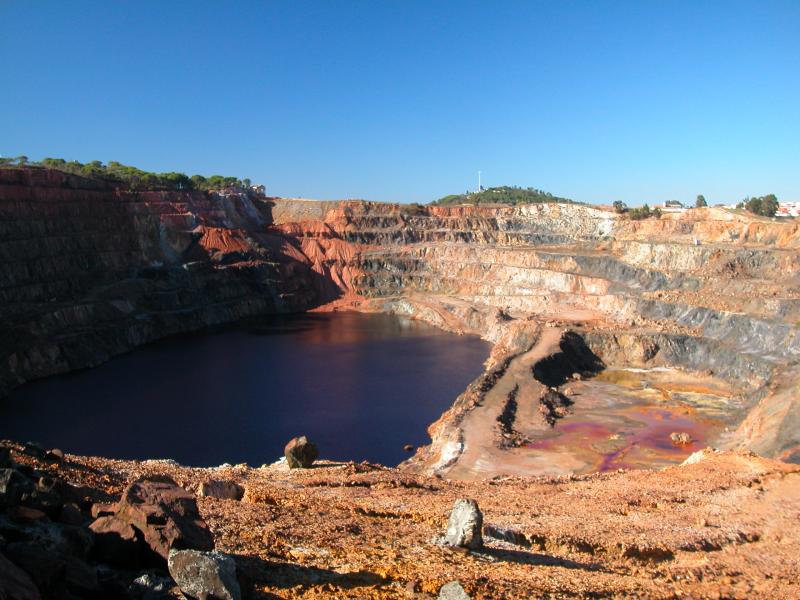
|
| Description: |
Filón Norte, Tharsis, Alosno, Huelva, Spain
Oxidized pyrite stockwork at Filon Norte. |
|
| Viewed: |
69211 Time(s) |
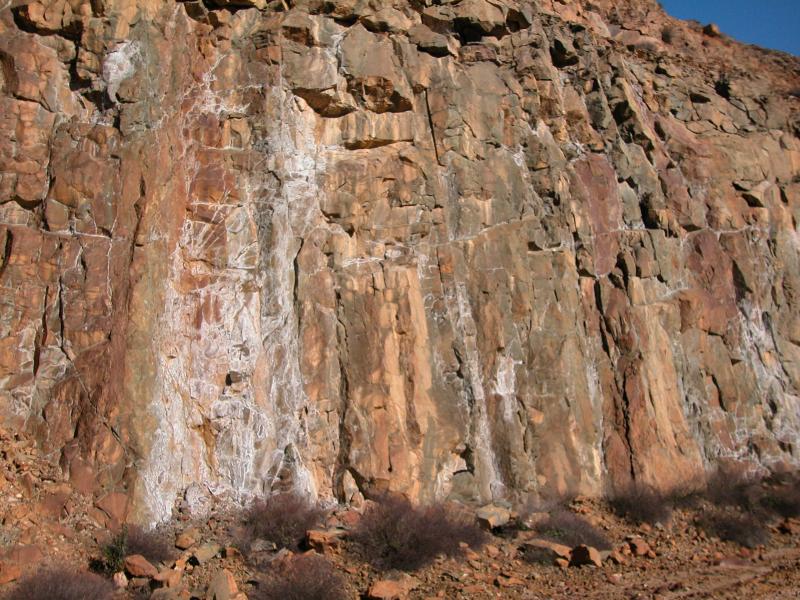
|
| Description: |
Melanterite
Filón Norte, Tharsis, Alosno, Huelva, Spain
The formation of beautiful melanterite in Filon Norte during cold days soon after raining, is an interesting phenomenon. Occasionally, the crystals are up to 5-10 cm., covering dozens of square meters of soil under the massive pyrite stockpiles. |
|
| Viewed: |
69218 Time(s) |
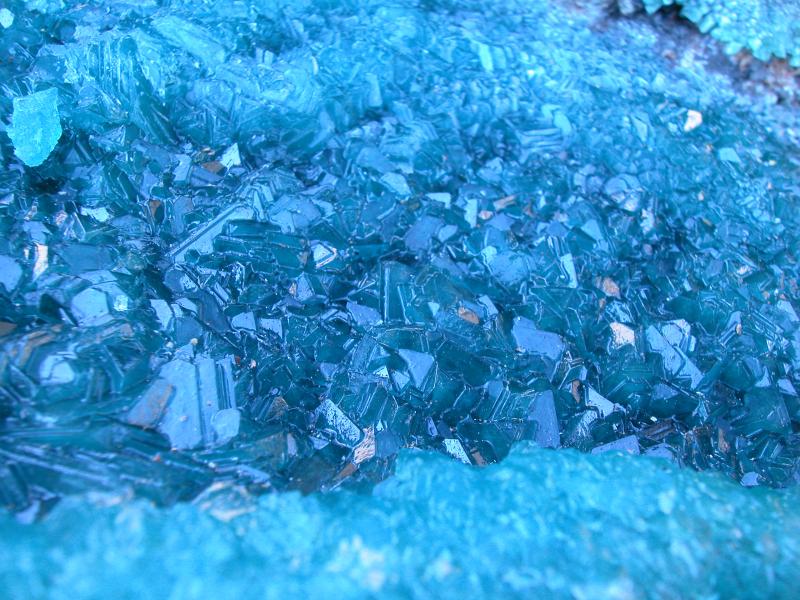
|
| Description: |
Filón Norte, Tharsis, Alosno, Huelva, Spain
iron oxide rich streams are common here. But, vascular plants appears not to be feared by the high metal content... |
|
| Viewed: |
69194 Time(s) |
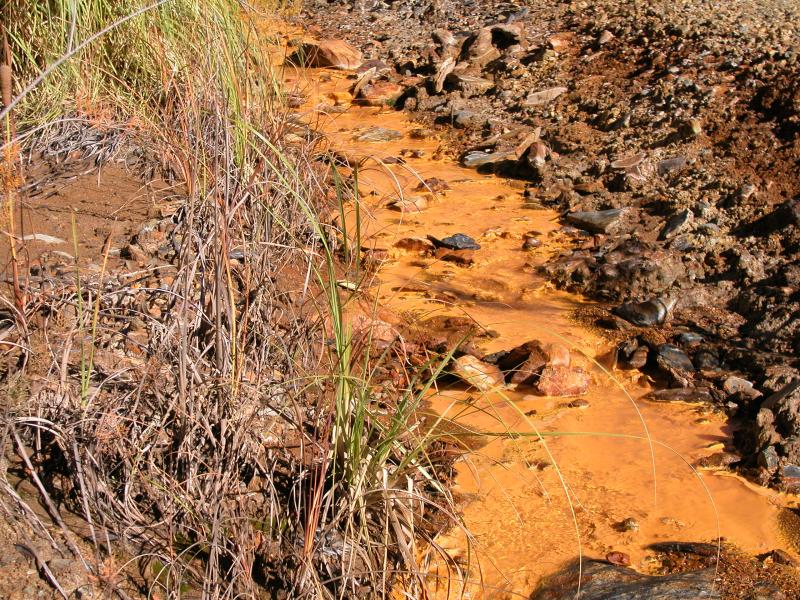
|
|
|
| Back to top |
|
 |
Cesar M. Salvan
Site Admin
Joined: 09 Jun 2008
Posts: 127
Location: Alcalá de Henares



|
 Posted: Mar 03, 2013 21:31 Post subject: Re: A Scientific and mineralogical trip to the Iberian Pyrite Belt - (6) Posted: Mar 03, 2013 21:31 Post subject: Re: A Scientific and mineralogical trip to the Iberian Pyrite Belt - (6) |
|
|
Filon Sur (Tharsis)
The Tharsis mines are probably one of the most beautiful and interesting groups of deposits on the IPB. The Filon Norte open pit contains a visible assemblage of massive sulfide hosted by dark shales, pyrite stockworks and a lot of very interesting structures (banded ore, carbonate ore...).
The Filon Sur open pit are composed by small lenticular massive pyrite masses and stockwork of primary ore. But the more interesting feature of Filon Sur is that hosts a potent gossan, that were systematically mines since Roman times. The gossan at Filon Sur is complex and very rich in valuable metals. The gossan has been worked for Ag-Au until recent times.
One of the gossan zones is a lead-rich beudantite-goethite gossan. This zone yielded a lot of interesting collectible mineral samples, including mimetite, cerussite, beudantite, iodargyrite and chlorargyrite.
The interpretation of the gossan suggest that the formation taken place in two stages: oxidation of underlying pyrite, with formation of jarosite group minerals, and second, weathering with formation of goethite and, in the latter phase, hematite.
| Description: |
Filón Sur, Tharsis, Alosno, Huelva, Spain
Filon Sur open pit overview. At left is located the lead rich gossan. |
|
| Viewed: |
69183 Time(s) |
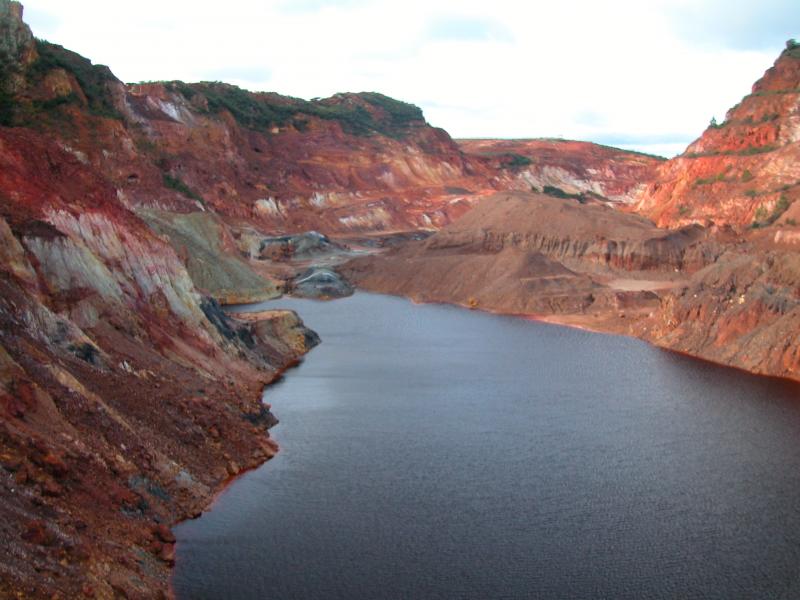
|
| Description: |
Mimetite and Beudantite
Filón Sur, Tharsis, Alosno, Huelva, Spain
FOV 2.5 mm. Hexagonal mimetite crystals and minute beudantite |
|
| Viewed: |
69216 Time(s) |
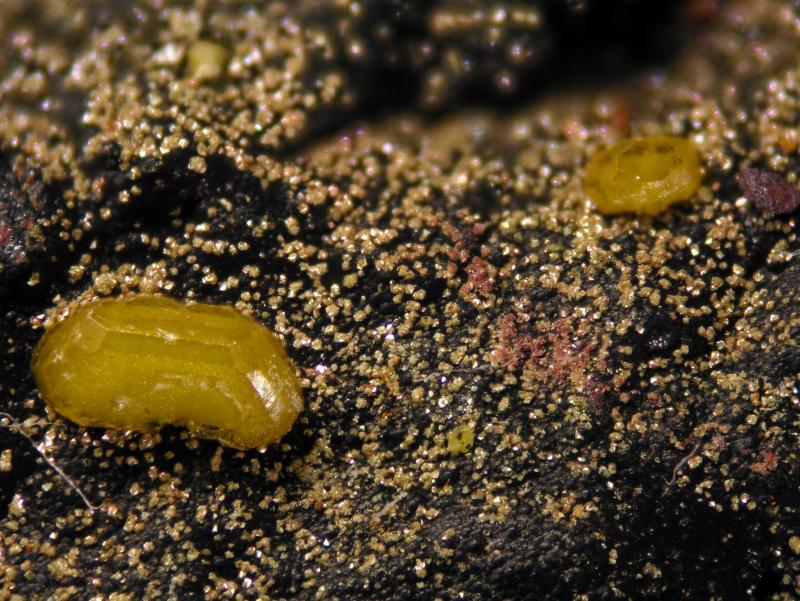
|
| Description: |
Mimetite
Filón Sur, Tharsis, Alosno, Huelva, Spain
Mimetite crystal 2 mm |
|
| Viewed: |
69194 Time(s) |
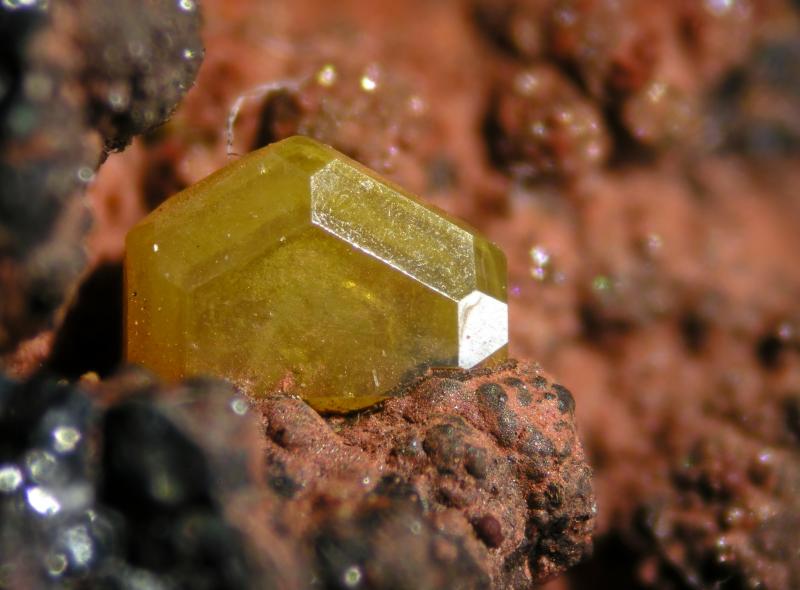
|
| Description: |
Filón Sur, Tharsis, Alosno, Huelva, Spain
A pocket performed by rockhunters looking for the beautiful goethite of Filon Sur. |
|
| Viewed: |
69192 Time(s) |
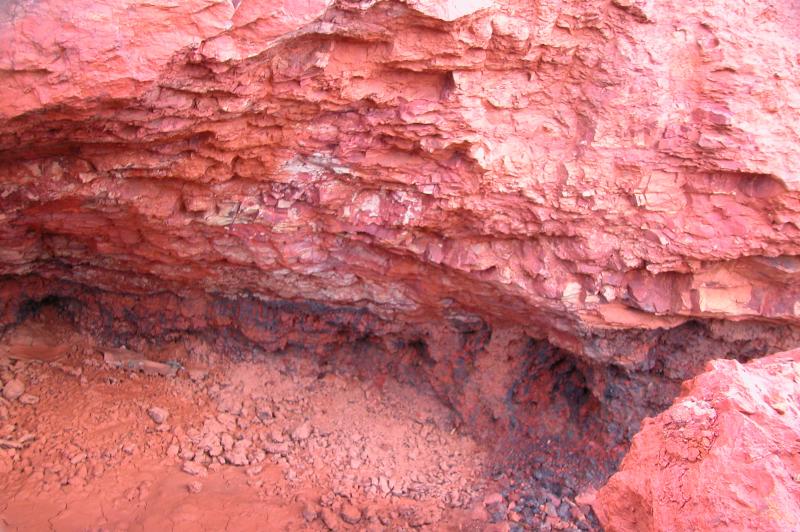
|
| Description: |
Cerussite
Filón Sur, Tharsis, Alosno, Huelva, Spain
1 cm crystal
1 cm crystal of cerussite from the gossan of Filon Sur |
|
| Viewed: |
69220 Time(s) |
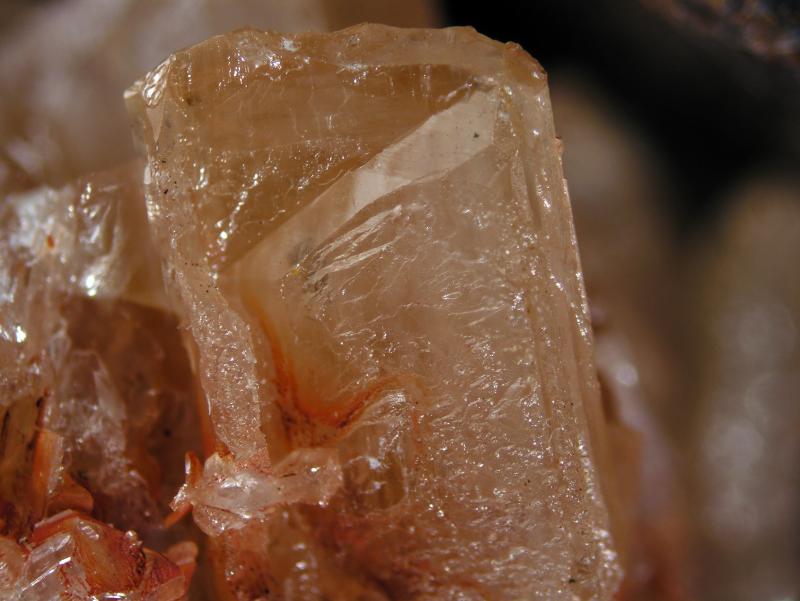
|
| Description: |
Beudantite
Filón Sur, Tharsis, Alosno, Huelva, Spain
FOV 1 mm
pseudocubic beudantite crystals from Filón Sur. |
|
| Viewed: |
69162 Time(s) |
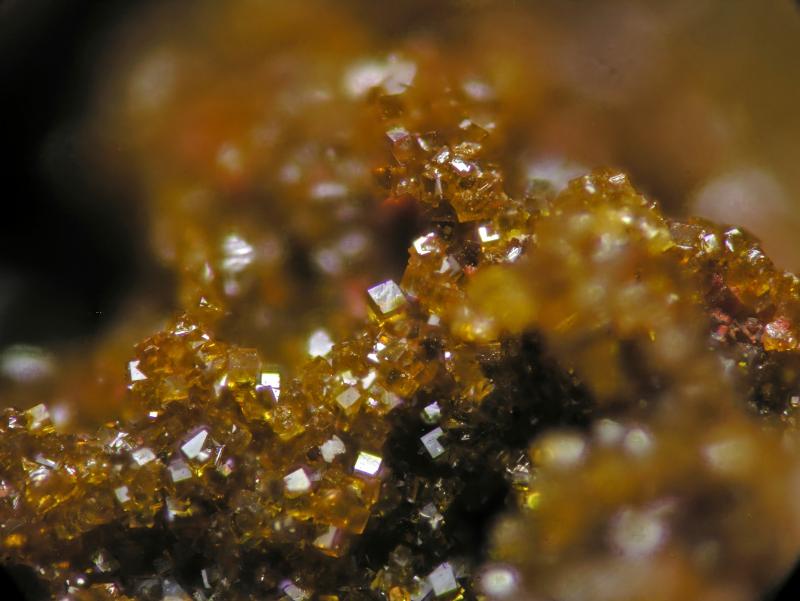
|
| Description: |
Chlorargyrite
Filón Sur, Tharsis, Alosno, Huelva, Spain
FOV 2 mm
Chlorargyrite is relatively common in the gossan of Filon Sur. |
|
| Viewed: |
69144 Time(s) |
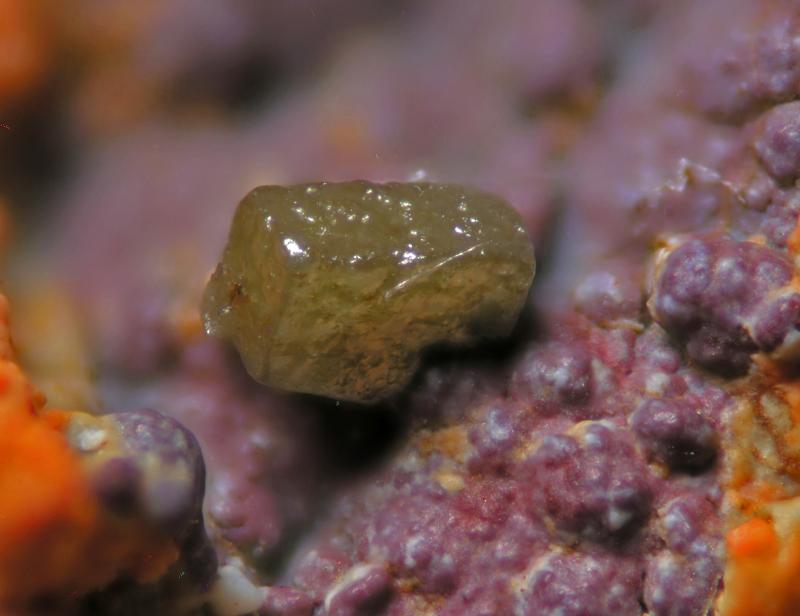
|
| Description: |
Filón Sur, Tharsis, Alosno, Huelva, Spain
It's me after 5 days outdoors and under a diet composed by ham and beer, in front of a Roman gallery. The space for oil lamps are visible. |
|
| Viewed: |
69147 Time(s) |
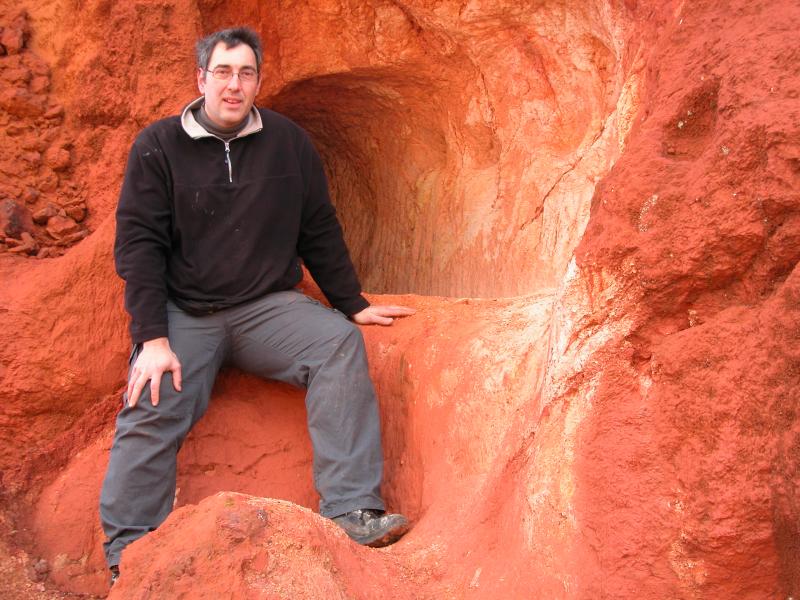
|
| Description: |
Mimetite
Filón Sur, Tharsis, Alosno, Huelva, Spain
crystal max. 0.9 mm
Typical mimetite on goethite from Filon Sur. |
|
| Viewed: |
69161 Time(s) |
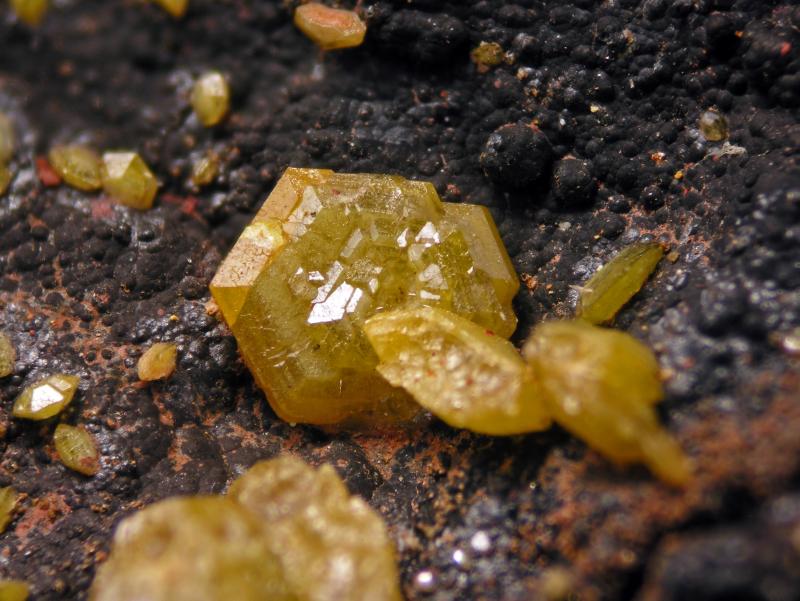
|
|
|
| Back to top |
|
 |
Matt_Zukowski
Site Admin
Joined: 10 Apr 2009
Posts: 738
Location: Alaska



|
 Posted: Mar 03, 2013 23:49 Post subject: Re: A Scientific and mineralogical trip to the Iberian Pyrite Belt - (6) Posted: Mar 03, 2013 23:49 Post subject: Re: A Scientific and mineralogical trip to the Iberian Pyrite Belt - (6) |
|
|
| Interesting text and pictures. Thanks for this writeup.
|
|
| Back to top |
|
 |
Antonio Alcaide
Site Admin

Joined: 23 Aug 2009
Posts: 314
Location: Spain



|
 Posted: Mar 04, 2013 03:56 Post subject: Re: A Scientific and mineralogical trip to the Iberian Pyrite Belt - (6) Posted: Mar 04, 2013 03:56 Post subject: Re: A Scientific and mineralogical trip to the Iberian Pyrite Belt - (6) |
|
|
Thank you very much, Cesar, for spending your "free" time in posting such an interesting report. I will "save" your pictures of the mimetites since I cannot take microphotographs myself!! :-)
_________________
Life is the shortest crystal |
|
| Back to top |
|
 |
Pierre Joubert
Joined: 09 Mar 2012
Posts: 1605
Location: Western Cape



|
 Posted: Mar 04, 2013 04:20 Post subject: Re: A Scientific and mineralogical trip to the Iberian Pyrite Belt Posted: Mar 04, 2013 04:20 Post subject: Re: A Scientific and mineralogical trip to the Iberian Pyrite Belt |
|
|
Fascinating article! Is there anything more coming?
_________________
Pierre Joubert
'The tree of silence bears the fruit of peace. ' |
|
| Back to top |
|
 |
Roger Warin

Joined: 23 Jan 2013
Posts: 1250



|
 Posted: Mar 04, 2013 09:26 Post subject: Re: A Scientific and mineralogical trip to the Iberian Pyrite Belt Posted: Mar 04, 2013 09:26 Post subject: Re: A Scientific and mineralogical trip to the Iberian Pyrite Belt |
|
|
| Amazing trip...
|
|
| Back to top |
|
 |
Pete Modreski
Site Admin

Joined: 30 Jul 2007
Posts: 710
Location: Denver, Colorado



|
 Posted: Mar 04, 2013 15:43 Post subject: Re: A Scientific and mineralogical trip to the Iberian Pyrite Belt Posted: Mar 04, 2013 15:43 Post subject: Re: A Scientific and mineralogical trip to the Iberian Pyrite Belt |
|
|
Thank you, Cesar, for your nice report and photos about this area. For some like myself, who are not terribly familar with these deposits in Spain, it provides a good enrichment of knowledge about them! To me, though I knew (to a very limited extent) that were numerous pyritic deposits in this part of Spain, the "Iberian pyrite deposits" mostly meant just "Rio Tinto", and I did not know anything about what other deposits existed or were being currently mined or explored. I did a little searching online after viewing your post, and I'm now aware that the old Rio Tinto deposit is in the eastern-most part of that northern pyrite belt, and it has been inactive since about 2001; and that there has been an attempt to renew mining there, but that has not been successful yet. One of the best maps I've found online showing the mines and deposits and geology in this belt is this one, from a mining investment company:
https://www.proactiveinvestors.com/genera/files/sponsor_extras/Image/Slide3.jpg
Best regards,
Pete Modreski
|
|
| Back to top |
|
 |
gemlover

Joined: 31 Dec 2008
Posts: 211
Location: Easley, SC



|
 Posted: Mar 04, 2013 15:51 Post subject: Re: A Scientific and mineralogical trip to the Iberian Pyrite Belt Posted: Mar 04, 2013 15:51 Post subject: Re: A Scientific and mineralogical trip to the Iberian Pyrite Belt |
|
|
Thanks Cesar and Pete, the presentation was great, then as with probably many, the slide showing a geologic map of that part of Spain and Portugal was extremely interesting. Especially since I have an internet friend from the coast of Portugal on the western shore of the map area.
John
_________________
John
John Atwell Rasmussen, Ph.D.. AJP
Geologist and Gemologist |
|
| Back to top |
|
 |
Cesar M. Salvan
Site Admin
Joined: 09 Jun 2008
Posts: 127
Location: Alcalá de Henares



|
 Posted: Mar 15, 2013 18:59 Post subject: Re: A Scientific and mineralogical trip to the Iberian Pyrite Belt Posted: Mar 15, 2013 18:59 Post subject: Re: A Scientific and mineralogical trip to the Iberian Pyrite Belt |
|
|
I want to continue with this brief revision with some Iberian Pyrite Belt deposits. Pete, I think is usual that people refers to the IPB just as Rio Tinto. It is not surprising, because some famous mines, as Atalaya and Cerro Colorado open pits belongs to Rio Tinto district. Atalaya open pit was famous because the awesome sulfates from the Alfredo underground workings. Other famous mine is Peña del Hierro, because in this zone some creeks converges to form the river Tinto. But the Rio Tinto mines, as you learned, are only one of several mining districts, which are at least equally important and interesting. If I can stimulate the curiosity about the IPB, this little effort in the forum will be a success!.
I began with the beautiful Tharsis mines, which complex and intriguing metallogeny is now under study. These mines belong to the southern IPB, characterized by the massive pyrite of DC-boundary age.
Now I will show you a beautiful open pit: the San Miguel mine (Almonaster la Real, Huelva, Spain). This constitutes the best example of the "northern IPB deposits" class, younger (Visean, Carboniferous) and with a completely different mineralization mechanism, basically replacive after volcanic rocks.
This mine, as usual in the IPB, show remains of Roman workings. The Romans were efficient miners, who oriented their work to the Ag and Au enrichment zone, in the contact between gossan and massive pyrite. Modern works began in 1851 and between 1859 and 1960 about 1.29Mt of pyritic ore with 2-3%Cu and 46%S were extracted. The copper grades were very irregular but with a significant enrichment towards the supergene zone. Most of the Au-bearing gossan has been recently removed by Minas de Rio Tinto S.A.L and treated in the plant at Rio Tinto. Luckily, a strong gossan and massive sulfide zone remains unexploited in a net, vertical cut that clearly shows the structure of the deposit and awesome pyrite replacement structures. Attempts for the protection of this open pit as a point of geological interest are now under development.
As usual in this kind of deposits of the IPB, the mineralogy is pretty monotonous, with a gossan very poor in supergenic species. It is interesting to note the presence of Baryte crystals, uncommon in other type of deposits.
In the next part I will show more minerals, I swear...
| Description: |
| Sketch that shows our model for the origin of the mineral from southern IPB deposits (in this case, Tharsis). The formation of mineral is dependent on the end Devonian biological crisis. |
|
| Viewed: |
68599 Time(s) |
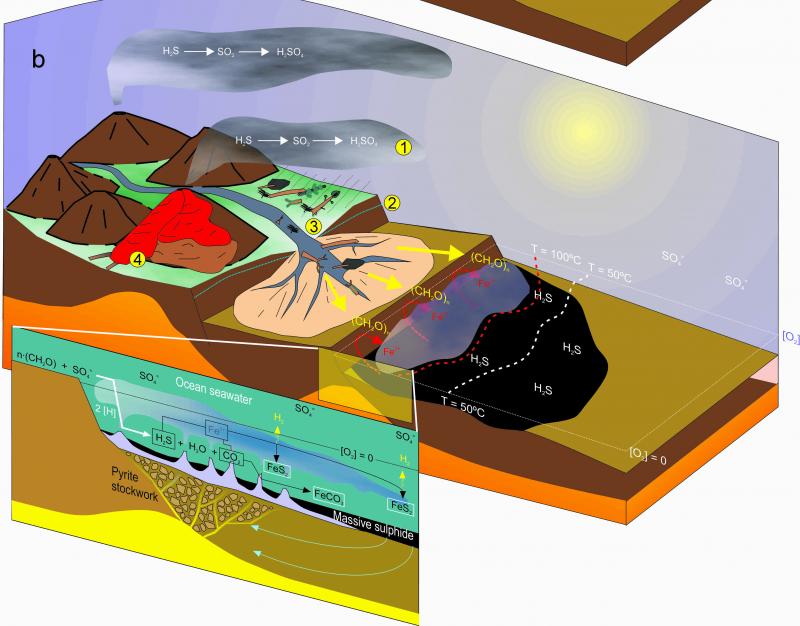
|
| Description: |
Pyrite-Siderite
Filón Norte, Tharsis, Alosno, Huelva, Spain
May be not very interesting for the typical mineral collector, but this kind of mineral, called "carbonate ore" and formed by alternating layers of siderite and pyrite, is one of the most interesting minerals to be found in Filón Norte open pit. |
|
| Viewed: |
68552 Time(s) |
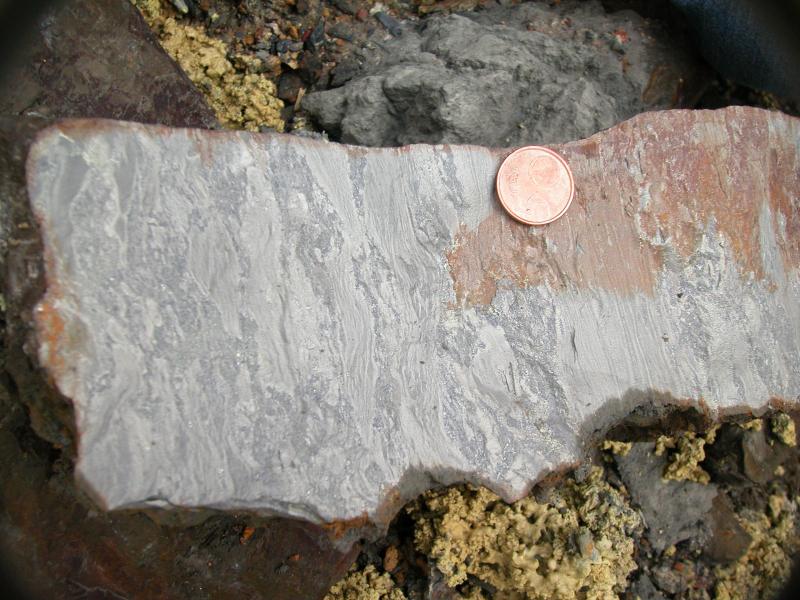
|
| Description: |
| old shaft in Peña del Hierro (Nerva, Huelva, Spain). The origin of the famous river Tinto is in the vicinity...All this zone is famous because the Astrobiology work performed here. The zone has been considered a "Mars analog" on Earth and the study of extremophile organisms received a lot of attention here. |
|
| Viewed: |
68546 Time(s) |
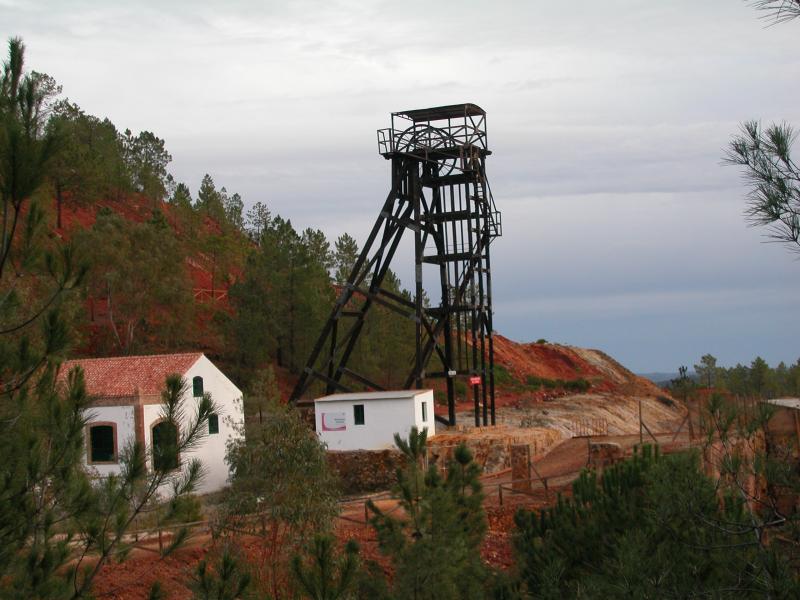
|
| Description: |
| The extremophiles paradise: biogenic terraces in the acidic waters of the river Tinto. The yellow material in the shore is biogenic Sulphur. |
|
| Viewed: |
68579 Time(s) |
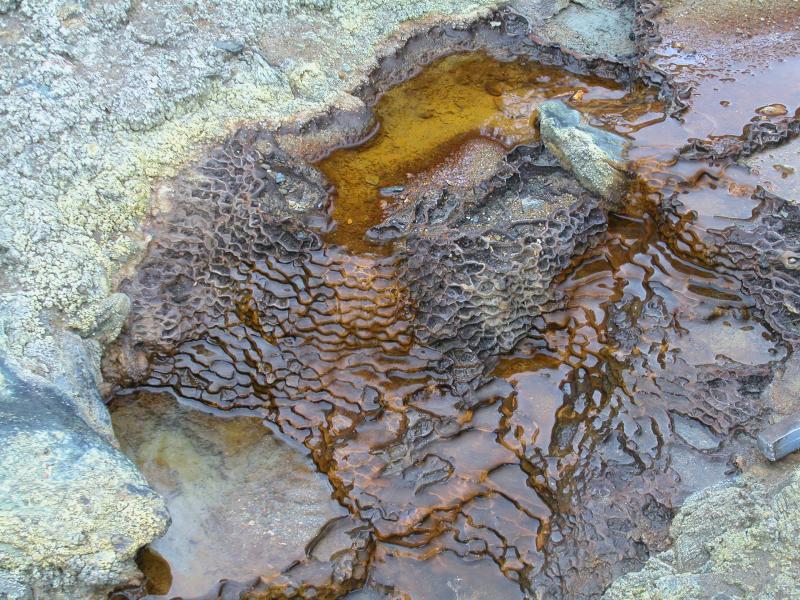
|
| Description: |
| The famous Atalaya open pit, (Rio Tinto, Huelva, Spain)... |
|
| Viewed: |
68577 Time(s) |
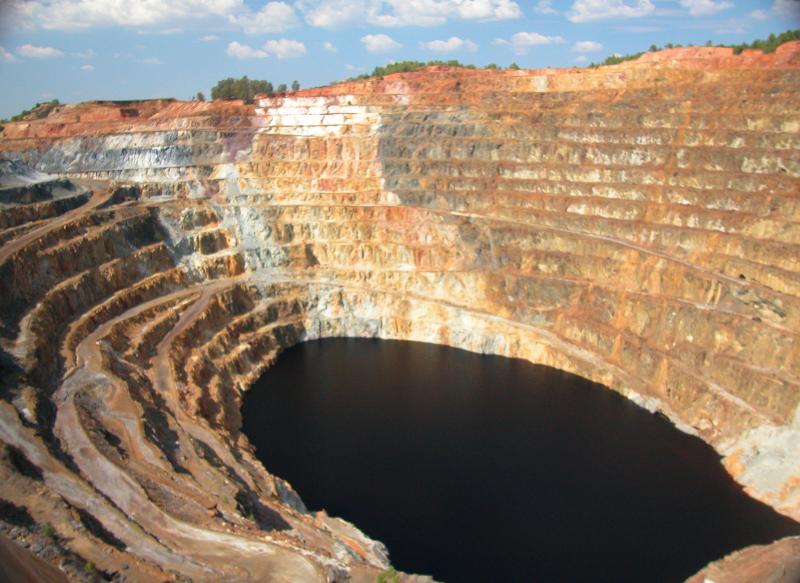
|
| Description: |
Sulphur and Covellite
Corta Atalaya, Rio Tinto, Huelva, Spain
FOV 5 mm
and one mineral from Atalaya mine. Sulphur on covellite from the copper enrichment zone of the mine. |
|
| Viewed: |
68694 Time(s) |
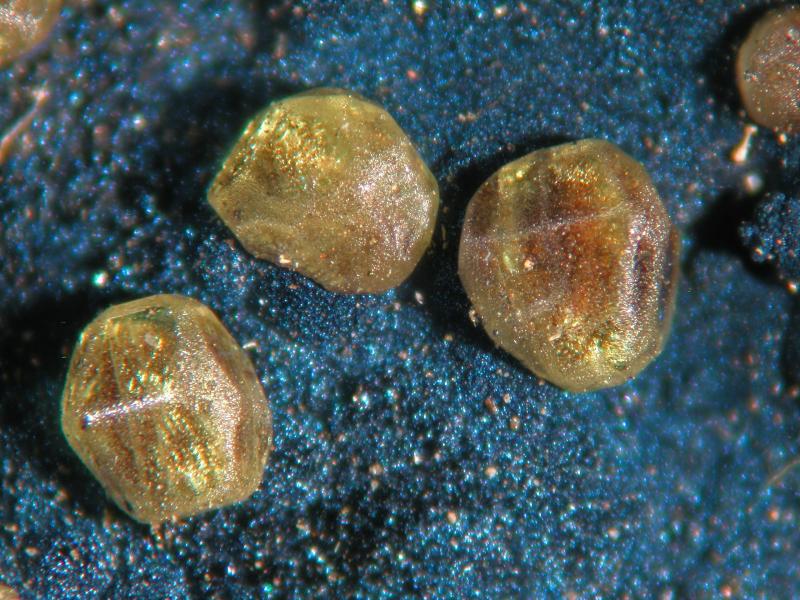
|
| Description: |
| A beautiful scenery in San Miguel open pit: Dramatic contact between gossan, in the uppermost zone, and the underlying semimasive, replacive pyrite. |
|
| Viewed: |
68590 Time(s) |
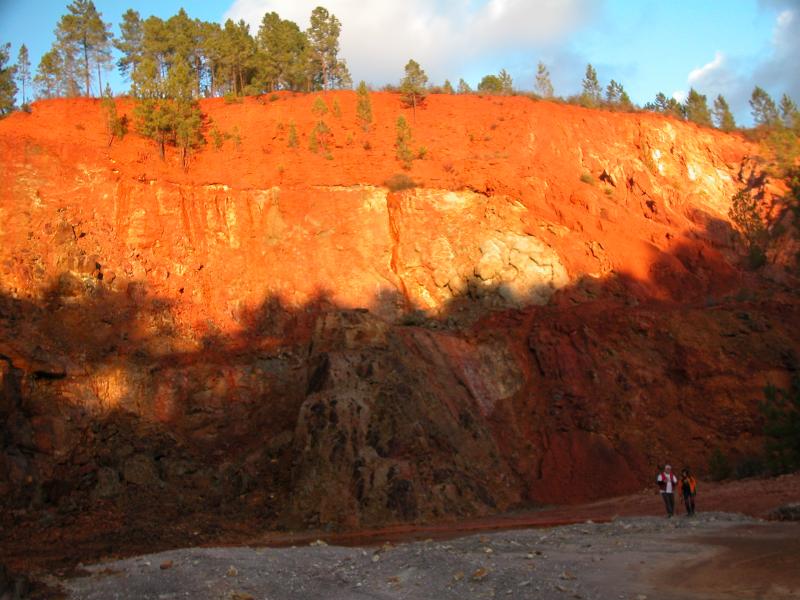
|
| Description: |
| San Miguel mine: awesome replacive texture. The hydrothermal fluid flowed left to right in the image, giving to the original volcanic rock a characteristic spindle form. |
|
| Viewed: |
68535 Time(s) |
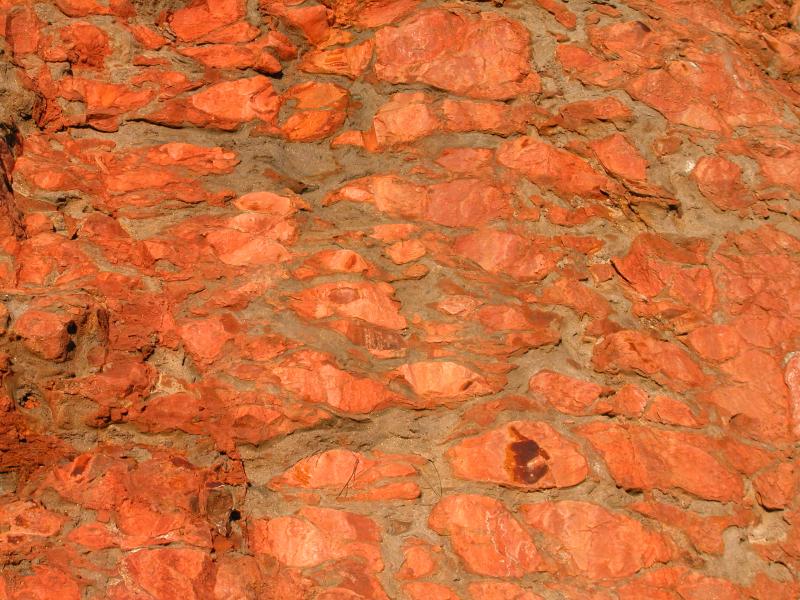
|
| Description: |
Baryte
San Miguel mine, Almonaster la Real, Huelva, Spain
Crystal 1 mm.
The only mineral that could sate my micromount hunger is the Baryte, very extended in the gossan of San Miguel. |
|
| Viewed: |
68551 Time(s) |
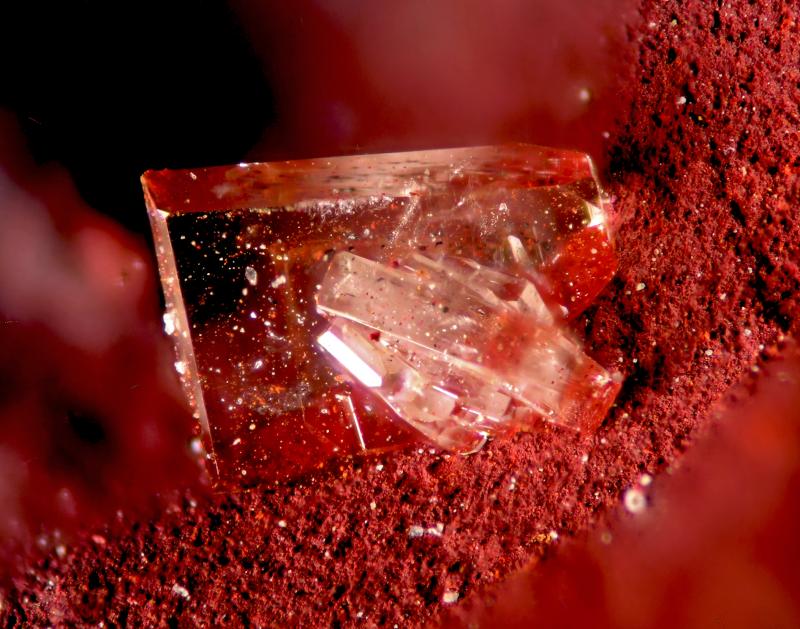
|
| Description: |
| View of the miners ghost town in the entrance of San Miguel mine, abandoned between 1920 and 1930. |
|
| Viewed: |
68521 Time(s) |
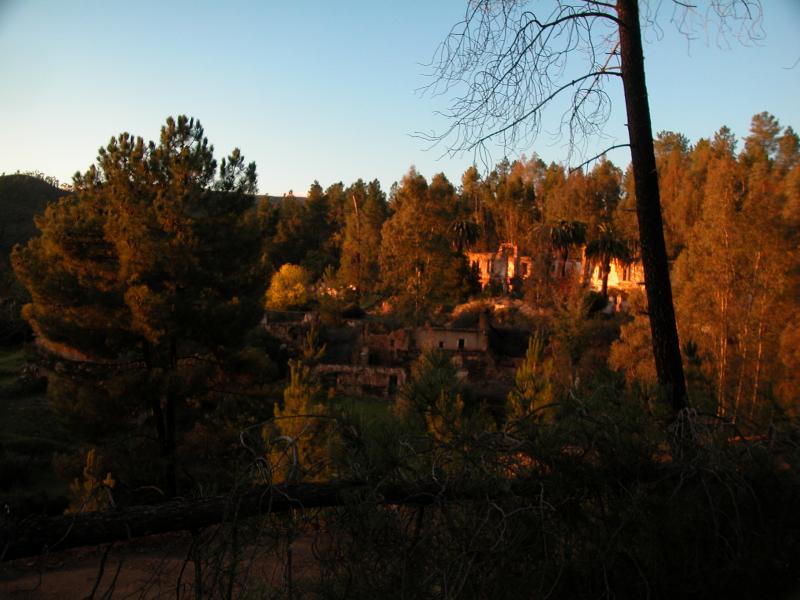
|
|
|
| Back to top |
|
 |
Jordi Fabre
Overall coordinator of the Forum

Joined: 07 Aug 2006
Posts: 5109
Location: Barcelona



|
 Posted: Mar 16, 2013 06:22 Post subject: Re: A Scientific and mineralogical trip to the Iberian Pyrite Belt Posted: Mar 16, 2013 06:22 Post subject: Re: A Scientific and mineralogical trip to the Iberian Pyrite Belt |
|
|
| Superb César. Please more...! ;-)
|
|
| Back to top |
|
 |
Cesar M. Salvan
Site Admin
Joined: 09 Jun 2008
Posts: 127
Location: Alcalá de Henares



|
 Posted: Mar 26, 2013 09:28 Post subject: Re: A Scientific and mineralogical trip to the Iberian Pyrite Belt Posted: Mar 26, 2013 09:28 Post subject: Re: A Scientific and mineralogical trip to the Iberian Pyrite Belt |
|
|
The last deposit we will review in this brief introduction to the Iberian Pyrite Belt is the Las Cruces mine, in Gerena, near Seville. The Las Cruces mine ise the easternmost in the IPB and is a very interesting mine from a mining, geological and mineralogical point of view. The mine is fully active and, to the date, is the richest active copper deposit in the world, with estimated 16 Mt of a supergene enrichment zone ore containing 7% copper and 5 Mt of a cupriferous stockwork with estimated 3% on copper. Overlying, the deposit has an Au-Ag rich gossan and, underlying, a 30 Mt massive sulfide lens, in part of exhalative origin, that are waiting for mining, with metal contents of about 1% copper, 2% lead, 4 % zinc and economically significant quantities of Ag and Au. The massive sulfide, called ‘polymetallic ore’ included in the Volcanosedimentary complex, is of Devonian-Carboniferous boundary age.
Thanks to the thick Tertiary and Quaternary sediments of the Guadalquivir basin, that buried the deposit about 150 meters subsurface, the deposit was discovered in 1994 and the Las Cruces open pit began the copper production in 2009. Luckily for me, because it was an opportunity to get involved in the scientific and mineralogical study of a very interesting mine and, moreover, near home….
I think that the most interesting feature of Las Cruces is the big secondary enrichment zone and the complex boundary between this zone and the gossan. I cannot give a lot of details about this intriguing structure because it is under study, with some findings waiting for publication. But, in brief, the boundary contains a zone, called “black gossan”, composed of galena and siderite, with features that suggest that it is the product of biogenic reduction of the gossan. Locally, it is rich in native silver and silver minerals, mainly proustite, in crystals up to centimetre size. The “yellow gossan” is formed by siderite, goethite, cerussite and anglesite (that form occasionally very good crystals) and minor galena and the gossan sensu stricto, composed by hematite, siderite, quartz and goethite. The gossan zone is interesting for the presence of marine meso and macrofossils mineralized with siderite or galena.
The secondary enrichment zone is composed mainly of a copper sulfide assemblage of the Chalcocite-Digenite mineral group, with neoformed pyrite and earlier and supergene bornite, chalcopyrite, enargite, tennantite and pearceite. Late hydrothermal alteration in the supergene zone formed a complex structure of fractures covered with calcite and with beautiful Chalcocite crystals, recrystallized after copper remobilization by hydrothermal fluids.
The Chalcocite crystals of the Las Cruces mine yielded, probably, the best chalcocite specimens in Europe and I saw some world-class specimens in the mine that are now part of good collections. Apart from the interesting mineral specimens and the economic importance of Las Cruces mine, at a scientific level the deposit has features that make it a unique deposit in the world. A very unusual and intriguing secondary and supergenic processing of the primary mineral that converts the Las Cruces deposit in a very important point in the study of the geology of mineral deposits and the interactions between biology and geological materials.
If readers of the forum are interested and wish to read more on the IPB, I can share some bibliography.
| Description: |
Las Cruces mine, Gerena, Seville, Spain
Las Cruces open pit in 2010 |
|
| Viewed: |
68214 Time(s) |
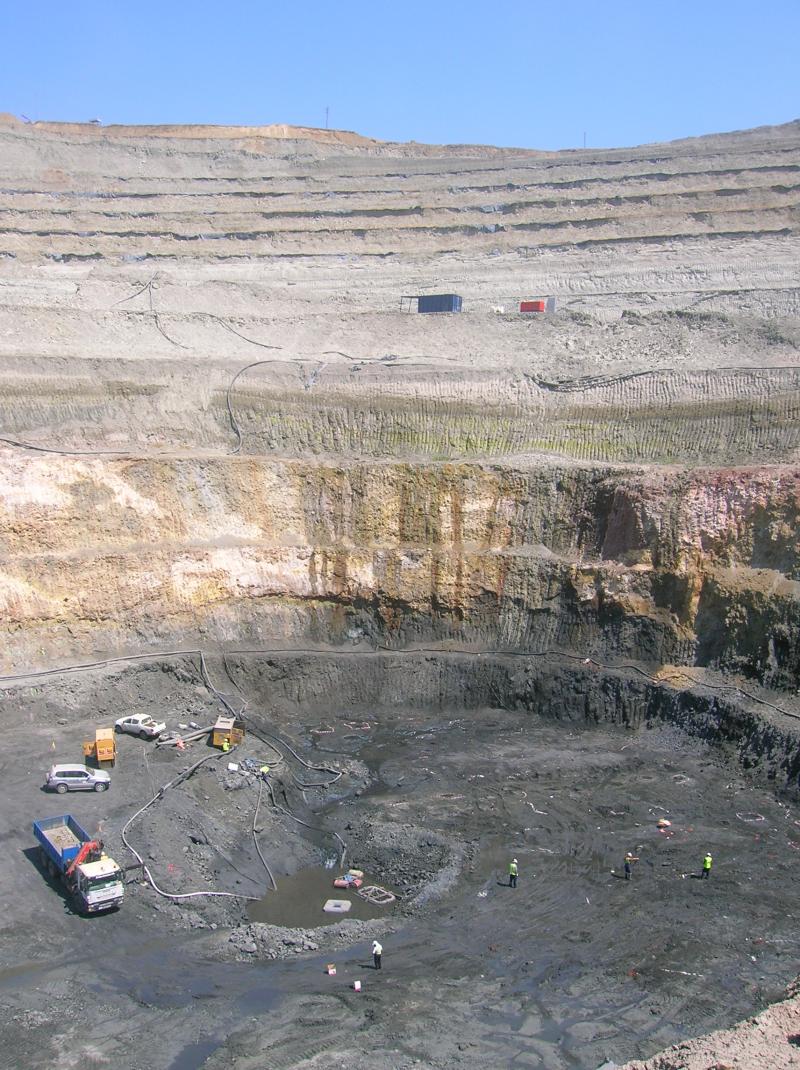
|
| Description: |
Las Cruces mine, Gerena, Seville, Spain
Beautiful perspective of the open pit in 2010. The secondary enrichment zone is visible at the bottom, with black chalcocite rich ore and galena rich ore. Overlying, the thick sedimentary cover (marls and calcarenites) of Guadalquivir basin. |
|
| Viewed: |
68132 Time(s) |
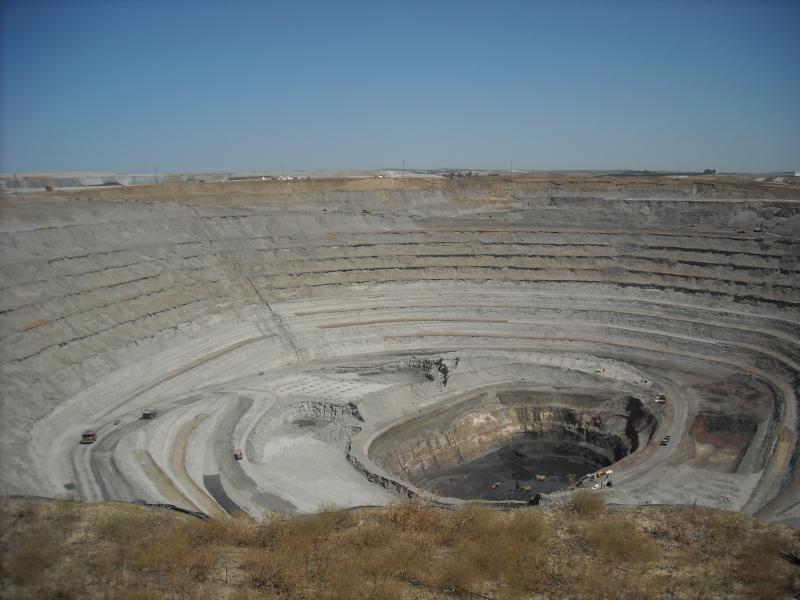
|
| Description: |
Las Cruces mine, Gerena, Seville, Spain
View of the contact zone between yellow gossan, black gossan and secondary copper sulfide ore |
|
| Viewed: |
68163 Time(s) |
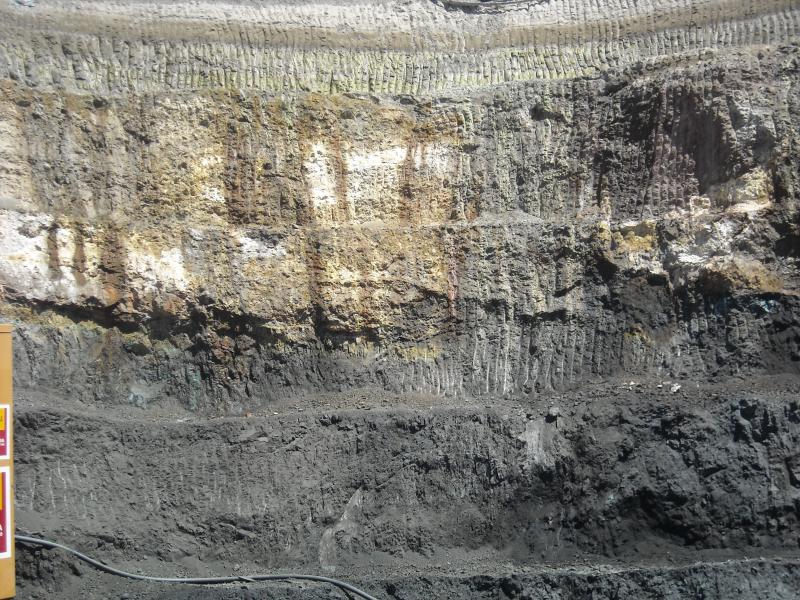
|
| Description: |
Chalcocite
Las Cruces mine, Gerena, Seville, Andalusia, Spain
FOV 1.5 cm
Beautiful crystal on calcite. Typical late hydrothermal chalcocite. |
|
| Viewed: |
68172 Time(s) |
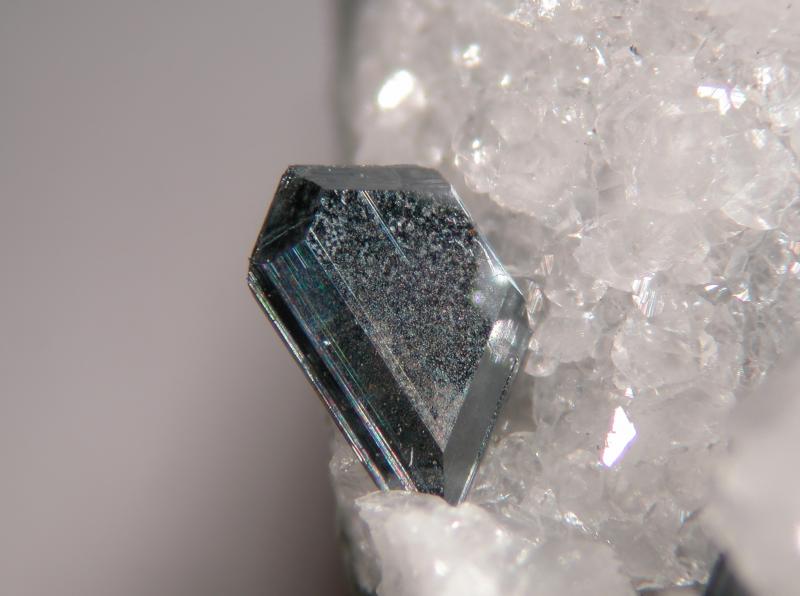
|
| Description: |
Chalcocite
Las Cruces mine, Gerena, Seville, Andalusia, Spain
Crystal 3 mm
Pseudohexagonal twinning in chalcocite. |
|
| Viewed: |
68125 Time(s) |
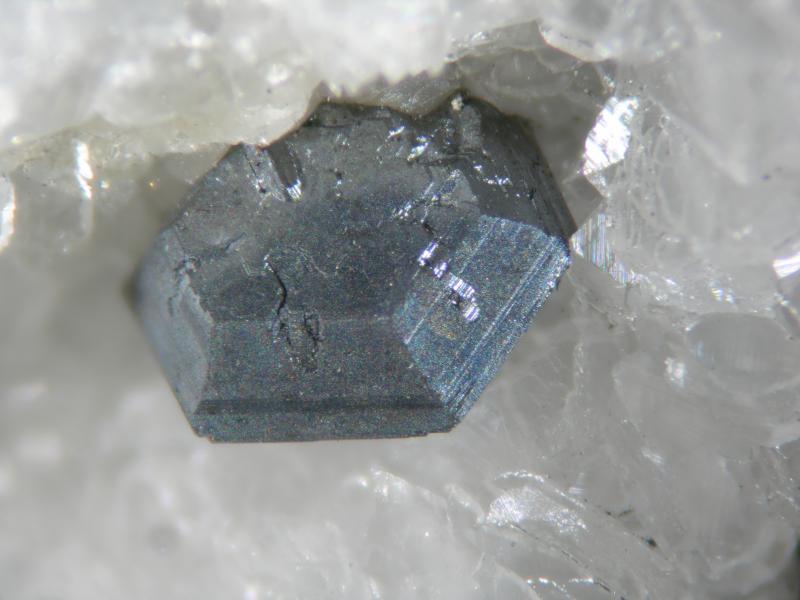
|
| Description: |
Las Cruces mine, Gerena, Seville, Andalusia, Spain
It's me collecting in the copper sulfide ore at Las Cruces. In my hand, the specimen pictured previously. See the calcite filled fractures, in whose cavities the chalcocite crystals grow. |
|
| Viewed: |
68171 Time(s) |
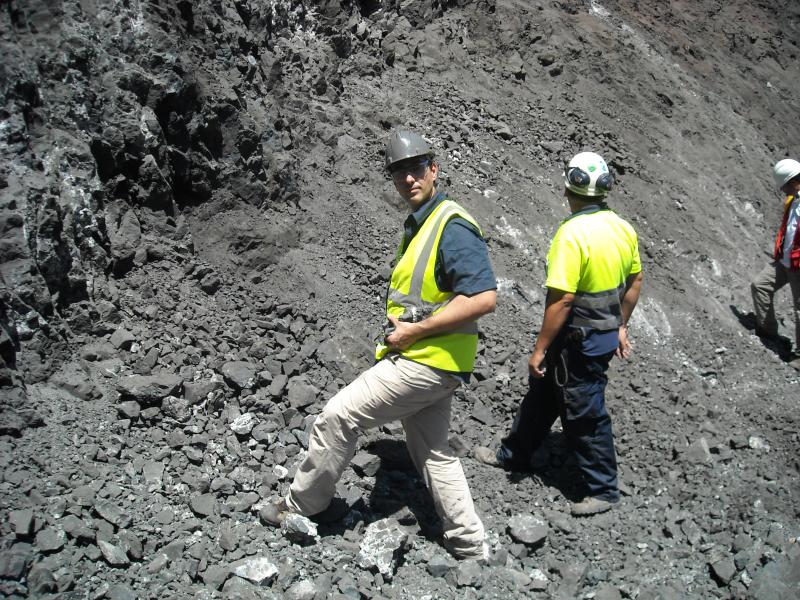
|
| Description: |
Pearceite
Las Cruces mine, Gerena, Seville, Andalusia, Spain
FOV 1.5 mm
Beautiful pearceite crystal, with harmotome (upper right). The matrix is chalcocite-djurleite. |
|
| Viewed: |
68152 Time(s) |
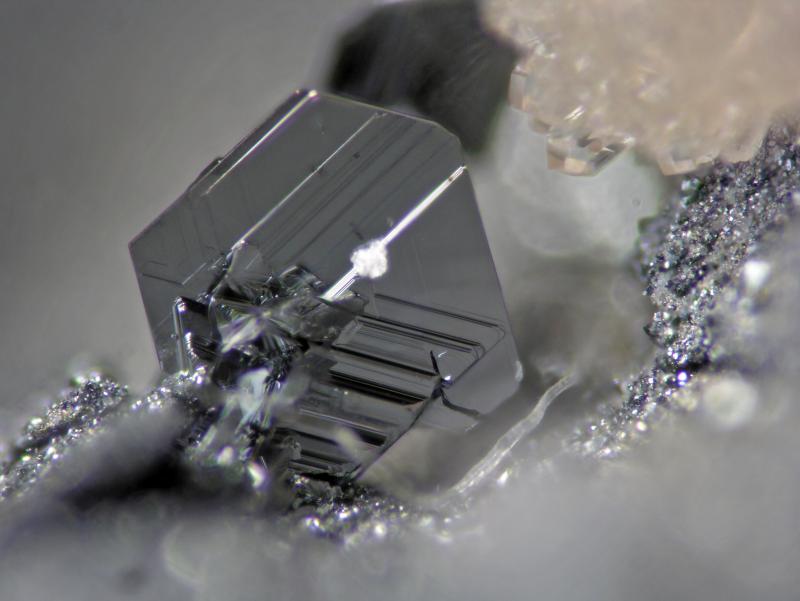
|
| Description: |
Siderite
Las Cruces mine, Gerena, Seville, Andalusia, Spain
FOV 5 mm
Siderite crystals and a curious biogenic galena developed in a fossil shell in the Las Cruces gossan. |
|
| Viewed: |
68180 Time(s) |
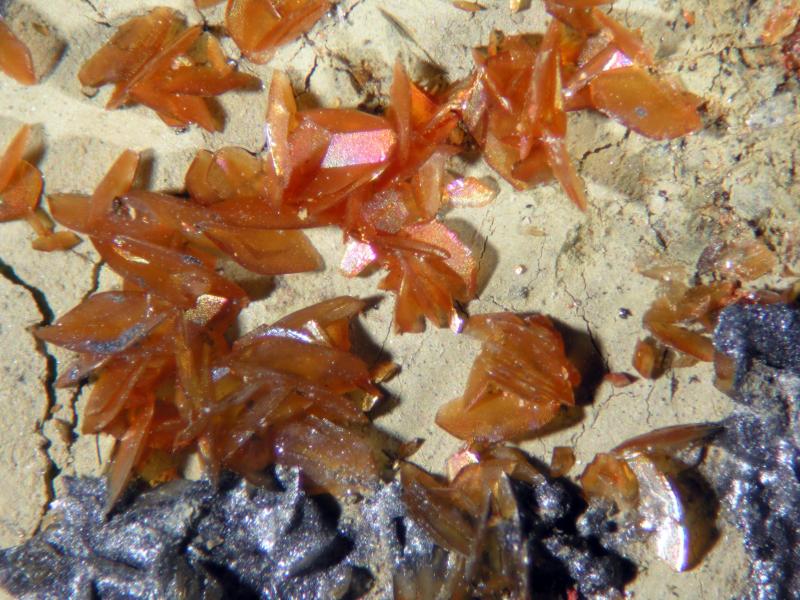
|
| Description: |
Proustite
Las Cruces mine, Gerena, Seville, Andalusia, Spain
crystal 1 cm
centimetric crystal in pulverulent galena. |
|
| Viewed: |
68285 Time(s) |
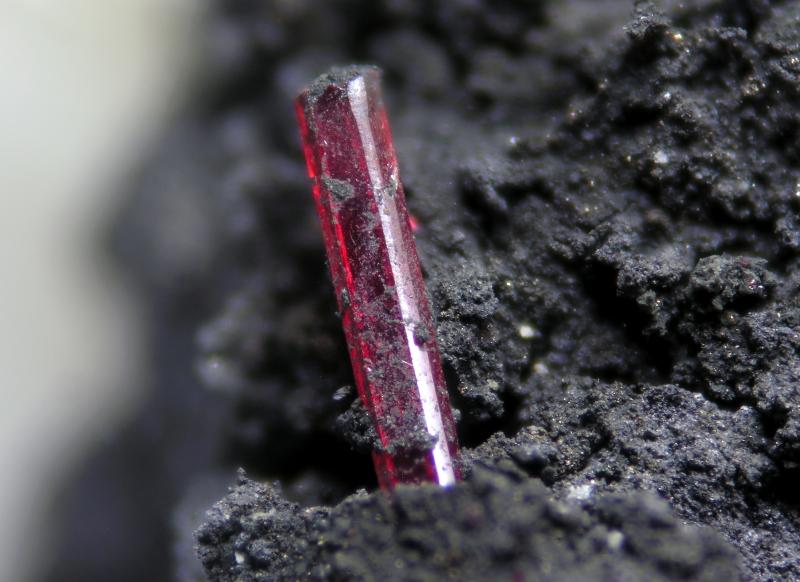
|
| Description: |
Xanthoconite
Las Cruces mine, Gerena, Seville, Andalusia, Spain
FOV 1 mm |
|
| Viewed: |
68138 Time(s) |
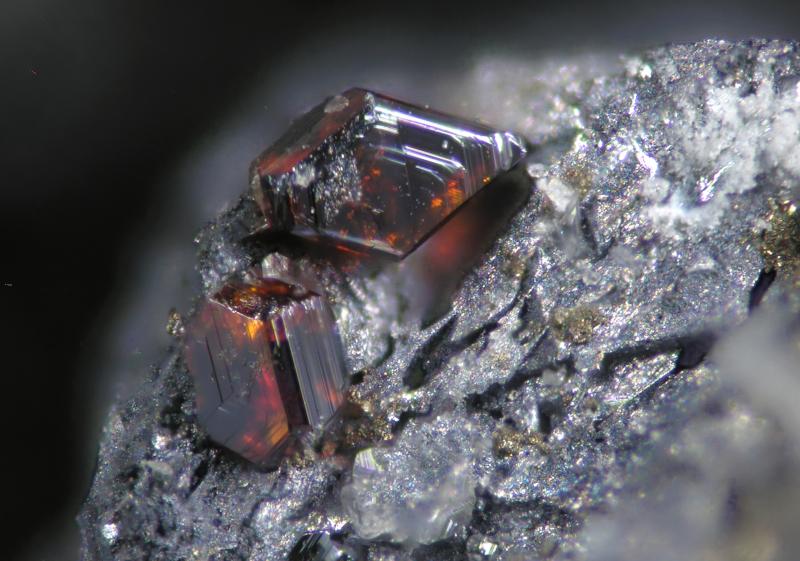
|
| Description: |
Cerussite
Las Cruces mine, Gerena, Seville, Andalusia, Spain
FOv 3.4 mm
Cerussite and anglesite crystals are relatively common in the lead rich gossan. |
|
| Viewed: |
68142 Time(s) |
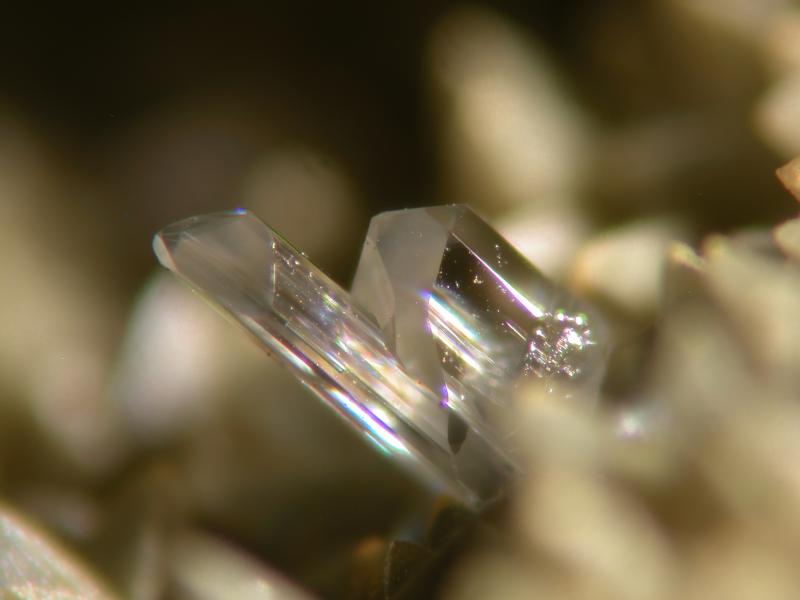
|
| Description: |
Chalcocite
Las Cruces mine, Gerena, Seville, Andalusia, Spain
FOV 7 mm
Finishing this post with a beautiful chalcocite crystal on calcite. |
|
| Viewed: |
68148 Time(s) |
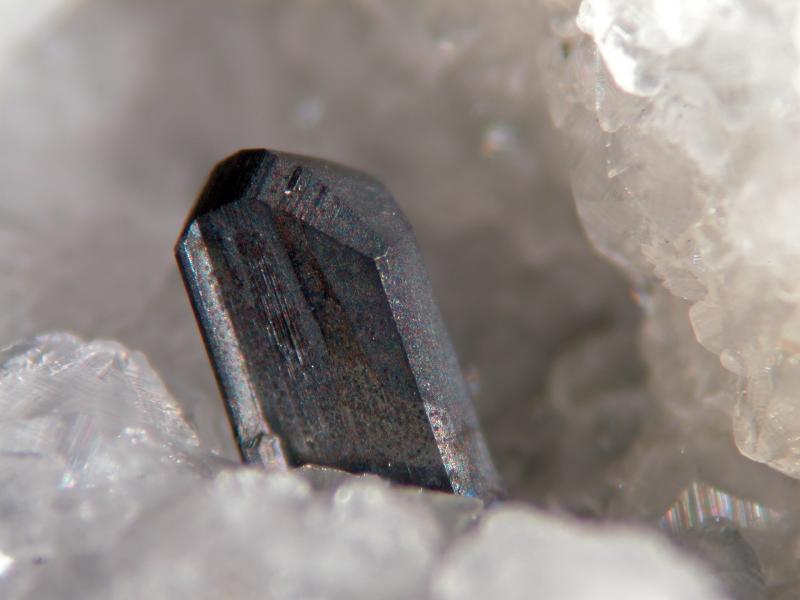
|
|
|
| Back to top |
|
 |
Mark Ost

Joined: 18 Mar 2013
Posts: 516
Location: Virginia Beach



|
 Posted: Mar 26, 2013 13:47 Post subject: Re: A Scientific and mineralogical trip to the Iberian Pyrite Belt Posted: Mar 26, 2013 13:47 Post subject: Re: A Scientific and mineralogical trip to the Iberian Pyrite Belt |
|
|
Cesar
Congratulations on a superb post. The pictures, combined with the geologic discussion, are excellent. I have never seen these colors of red before, not in our Triassic fault basins of the east coast or the clays of the southeast U.S. . Lovely. This is a really nice reference for those unfamiliar with this deposit. Thanks.
Mark
|
|
| Back to top |
|
 |
Roger Warin

Joined: 23 Jan 2013
Posts: 1250



|
 Posted: Mar 26, 2013 15:25 Post subject: Re: A Scientific and mineralogical trip to the Iberian Pyrite Belt Posted: Mar 26, 2013 15:25 Post subject: Re: A Scientific and mineralogical trip to the Iberian Pyrite Belt |
|
|
Extraordinary report and great pictures, thank you for sharing your knowledge and aesthetic sense.
All the best for Spain and you,
Roger.
|
|
| Back to top |
|
 |
Cesar M. Salvan
Site Admin
Joined: 09 Jun 2008
Posts: 127
Location: Alcalá de Henares



|
 Posted: Mar 27, 2013 12:42 Post subject: Re: A Scientific and mineralogical trip to the Iberian Pyrite Belt Posted: Mar 27, 2013 12:42 Post subject: Re: A Scientific and mineralogical trip to the Iberian Pyrite Belt |
|
|
Mark, Roger,
Thank you for your interest and kind words.
Mark, indeed the red color of the iron oxide gossan is impressive in live view. Especially in the beautiful San Miguel open pit, that preserved intact the contact between the primary ore and the paprika-red hematite rich gossan. My goal was to introduce the IPB deposits to those who are unfamiliar with them, as it is, probably, the most important mining district in the Iberian peninsula from a global perspective.
| Description: |
Proustite
Las Cruces mine, Gerena, Seville, Andalusia, Spain
0.7 cm crystals
The association of proustite (a hidrothermal mineral formed at relatively high temperature) with the secondary, pulverulent and possibly biogenic galena in Las Cruces is intriguing. |
|
| Viewed: |
67839 Time(s) |
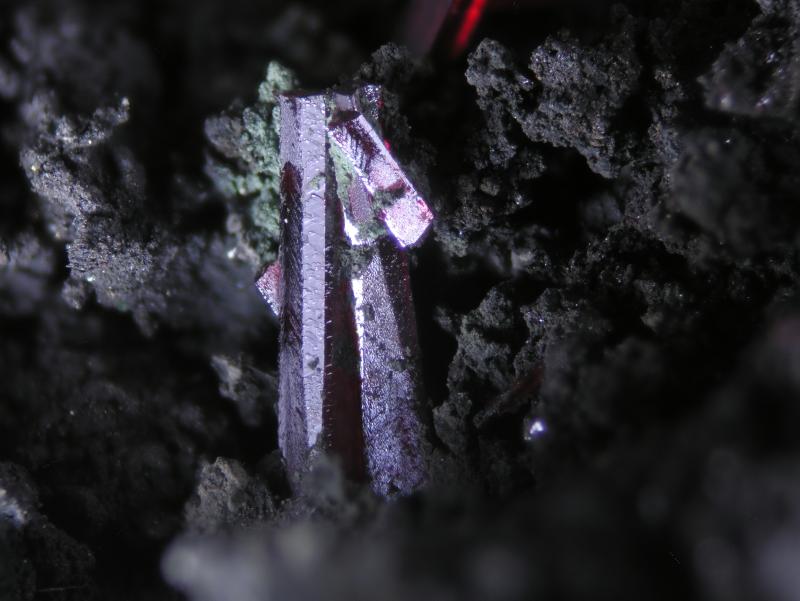
|
| Description: |
Chalcocite
Las Cruces mine, Gerena, Seville, Andalusia, Spain
2 cm crystal
It is not usual in the IPB to find centimetric crystals of sulfide minerals. I recovered this specimen in 2010, just after the beginning of copper production. |
|
| Viewed: |
67883 Time(s) |
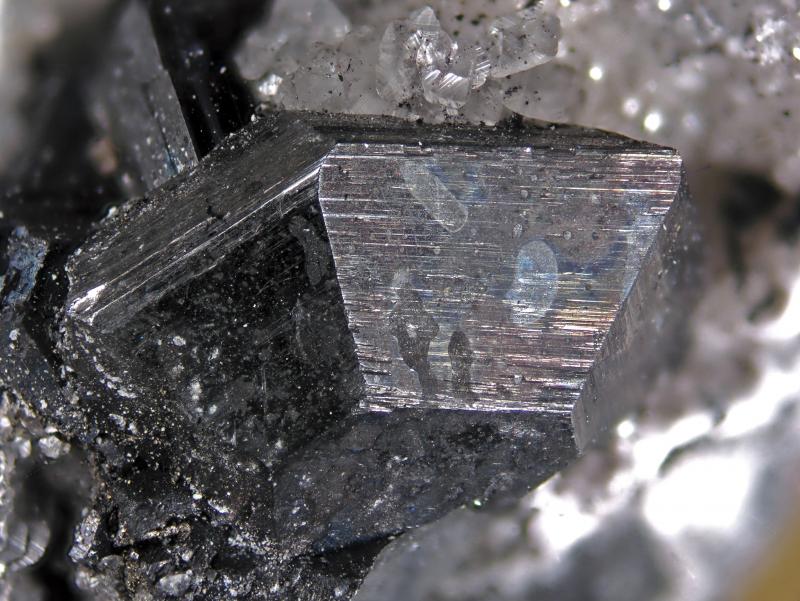
|
| Description: |
Chalcocite
Las Cruces mine, Gerena, Seville, Andalusia, Spain
Chalcocite crystal photographed in situ |
|
| Viewed: |
67819 Time(s) |
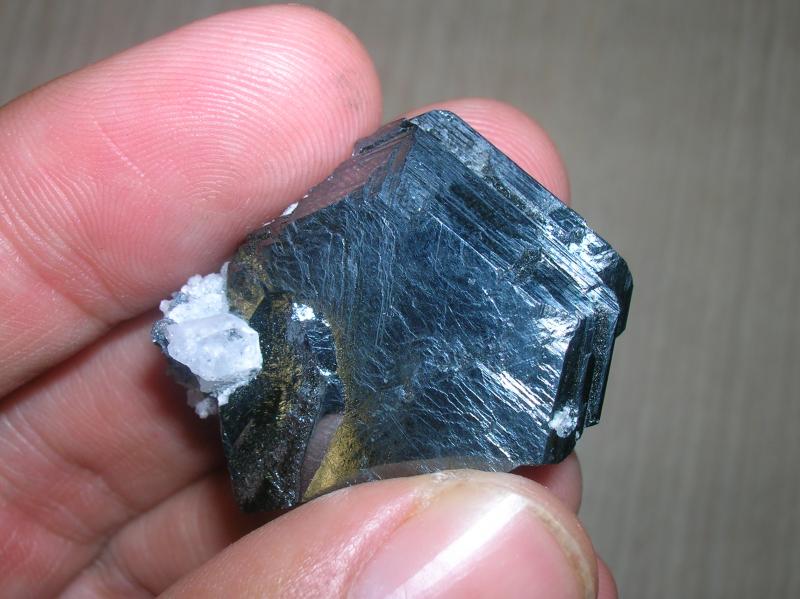
|
| Description: |
Las Cruces mine, Gerena, Seville, Andalusia, Spain
From the mineral to the market: pure copper slabs prepared for shipping. The hydrometallurgy process of Las Cruces mine is efficient and allow to obtain highly purity copper. |
|
| Viewed: |
67889 Time(s) |
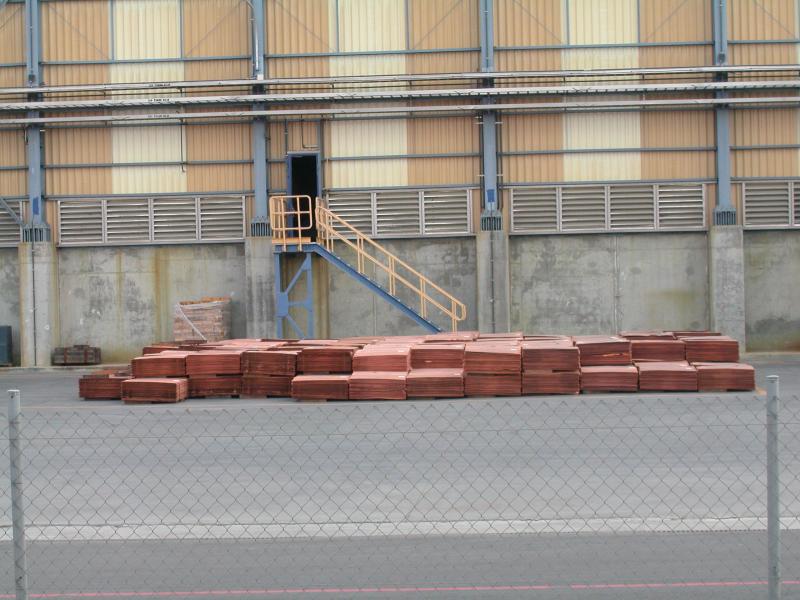
|
|
|
| Back to top |
|
 |
Mark Ost

Joined: 18 Mar 2013
Posts: 516
Location: Virginia Beach



|
 Posted: Mar 27, 2013 15:11 Post subject: Re: A Scientific and mineralogical trip to the Iberian Pyrite Belt - (6) Posted: Mar 27, 2013 15:11 Post subject: Re: A Scientific and mineralogical trip to the Iberian Pyrite Belt - (6) |
|
|
| You are doing a fine job of it. Your micro photography is very good. I would almost call the colors vermilion.........................almost, because; as a man I can only really recognize primary colors! We need our painter here to weigh in on color. I'll bet those copper sheets are heavy. Keep it coming. I love this thread.
|
|
| Back to top |
|
 |
|





